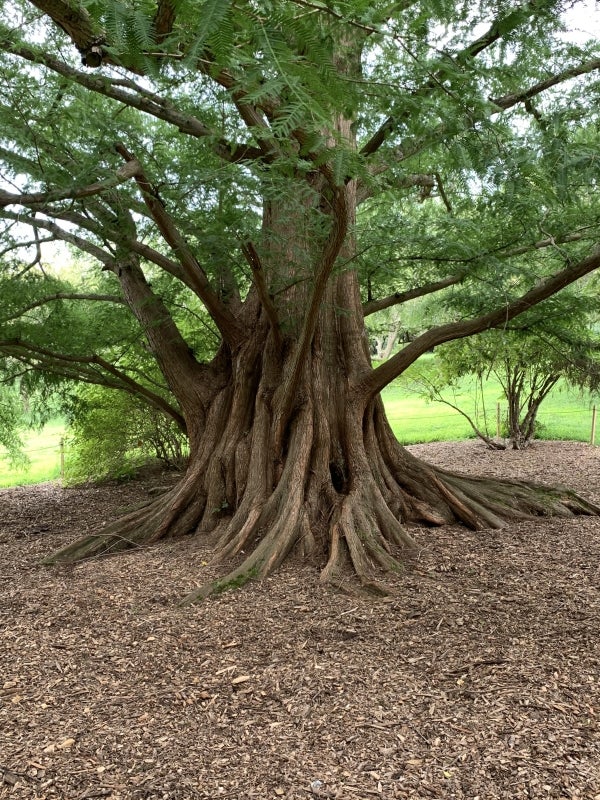Blog

Plant Names and Provenance: Dawn-redwood

Metasequoia glyptostroboides (dawn-redwood) is a deciduous conifer from Central China that is often referred to as a “living fossil,” and the Morris Arboretum currently cultivates forty-eight of these majestic trees.
The common name, dawn-redwood, was coined to evoke the concept that this tree is as ancient as the dawn of time. In 1941, a Japanese paleobotanist, Shigeru Miki, described a fossil-based plant genus that he named Metasequoia, meaning “akin to Sequoia.” [Sequoia sempervirens (California redwood) is the only living species of Sequoia.] Fossil evidence indicated that Metasequoia spp. were once abundant in both North America and Asia, seemingly becoming extinct about two to five million years ago. What a surprise, then, when a live tree was discovered in Central China and formally published as Metasequoia glyptostroboides in 1948 by Chinese scientists Hu and Cheng. The specific epithet glyptostroboides, meaning “resembling Glyptostrobus,” was chosen because the live tree was initially misidentified as Glyptostrobus pensilis (Chinese swamp cypress).
In 1947, the Arnold Arboretum sent $250 to Cheng in support of seed collection. This was the primary funding source for C.T. Hwa, a graduate student of Cheng’s who made the arduous journey to collect several pounds of seeds—not only from the original and single M. glyptostroboides, but also from a nearby seed stand that he discovered. The five dawn-redwoods in the Morris Arboretum with accession numbers starting with 1948 were grown from seeds from this one-man expedition and were shared by the Arnold Arboretum in 1948.
The six dawn-redwoods in the Morris Arboretum with accession numbers starting with 1949 were started from seeds shared by the National Taiwan University in 1949. After the formation of the Peopleʻs Republic of China that same year, there are no records of any additional dawn-redwood seeds leaving China until 1979; during this thirty-year hiatus, horticulturalists relied on cuttings to meet the growing demand for this tree. Starting in 1979, new genotypes in the form of wild-collected seeds began to be distributed, initially to Europe and, in the early 1990s, to a consortium of institutions in the US.



As they can grow to over one-hundred feet tall and twenty-five feet wide, three shorter cultivars on display at the Morris Arboretum might better suit most homeowners. ʻBonsaiʻ is a dwarf, only three feet high after ten years, that was found by chance among seedlings grown by Dr. J. E. Kuser, an associate professor of forestry at Rutgers University. Dr. Kuser kindly donated his original ʻBonsaiʻ to the Morris Arboretum, where it grows within the confines of the Garden Railway. As is often the case with dwarf plants, it does have reduced vigor. ʻMiss Graceʻ was found as a witches’ broom (an abberrant branch growing on a tree) and has a prostrate growth form that keeps it close to the ground unless it is staked. Finally, ʻLittle Giantʻ may be smaller than the straight species, although there is wide disagreement about its mature height, with estimates ranging from fifteen to eighty feet.


Find the locations of all of these Metasequoia specimens on Collection Connection; two of them are Champion Trees of Pennsylvania. If you search them out in winter, be aware that dawn-redwood is one of those rare conifers that has evolved to be deciduous: after a glorious autumn display of coppery-brown, the leaves fall to reveal more of the cinnamon-colored bark. Metasequoia glyptostroboides is an endangered species due to habitat loss; fortunately, its DNA will be preserved around the world wherever dawn-redwoods are cultivated.
Katherine has her Certificate in Botany from the New York Botanical Garden and is a botanical tour guide and freelance writer. You can contact her with comments or requests for photos here.